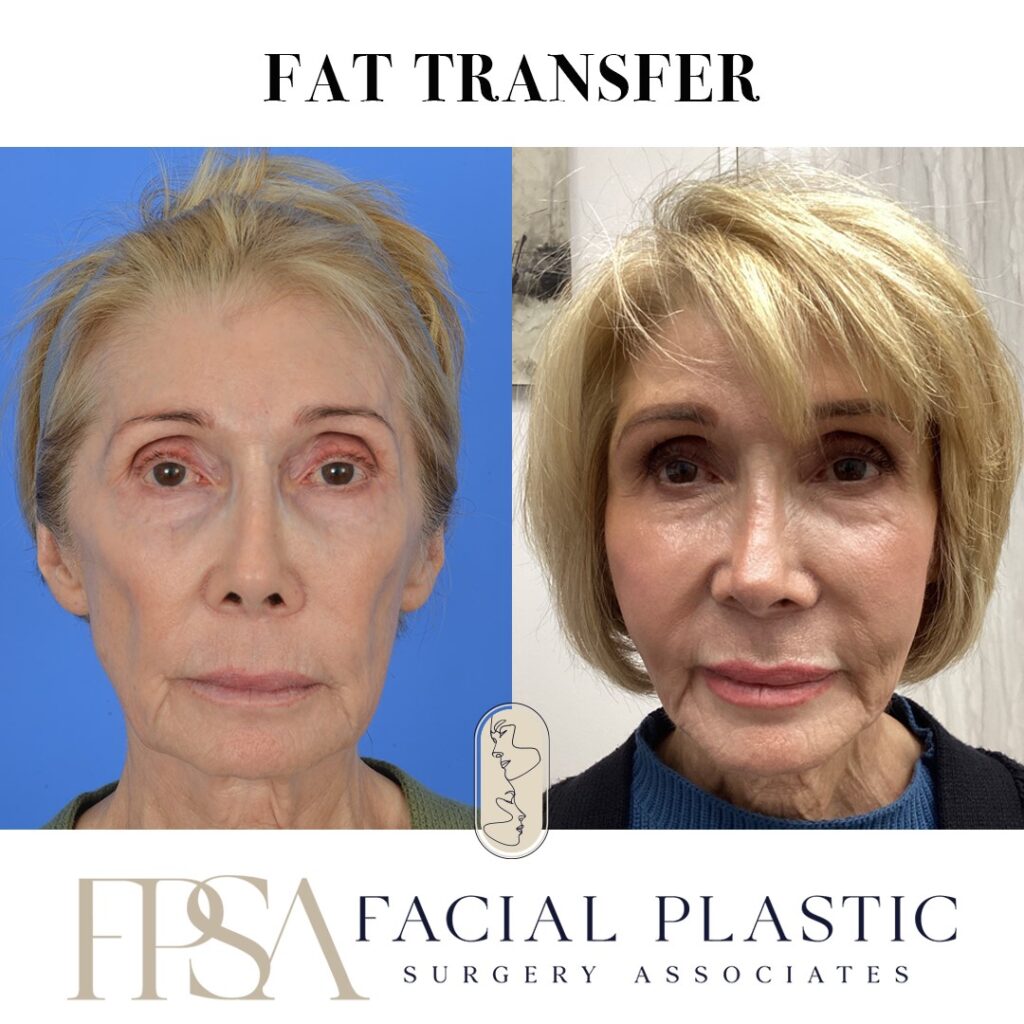November 20, 2024 | Uncategorized
5 minute read
Facial fat transfer, also known as facial fat grafting or fat injections, is a cosmetic procedure that involves injecting fat from one part of the patient’s own body into the face to improve volume and reduce wrinkles. The fat is gathered and grafted through various techniques tailored specifically to each individual patient’s needs. Dr. Sean Delaney, double-board certified facial plastic surgeon, is an expert on Facial Fat Transfer and shares more in-depth information about this exciting rejuvenation procedure.
What is Facial Fat Transfer?
Advancements in fat grafting technology have created greater interest and popularity in using this procedure that provides great results without facial implants or medical devices.
If you’re curious about Facial Fat Transfer and Fat Grafting in facial augmentation and interested in learning more, we’re happy to help.
Learn more about Facial Fat Transfer, check out this video
Volume Loss
A healthy amount of fat in regions, such as the midface and cheeks, imparts a sense of youth. When we age, there can be a loss of fat in key areas which can create a hollow and aged look. A similar appearance can occur with significant weight loss, even in younger individuals.
In addition to the midface or cheek area, volume loss can occur under the eyes (tear trough), around the eyes (orbital rim), smile lines, along the jawline, and temples. Facial Fat Transfer helps restore the lost fat in your face with your own body fat from another area for a more rejuvenated and refreshed look.

How is Fat Transfer performed?
Dr. Delaney uses purified fat, extracted from your own body fat, usually from the thighs or abdomen. Fat is harvested using a gentle liposuction technique, and local anesthetic, on the day of treatment. After the fat is harvested, it is then separated from the rest of the fluids, which are removed, purified and then reinjected back into the treatment areas desired in the face.
Dr. Delaney is conservative with fat transfer to ensure natural results and to avoid the “over-injected” look. His meticulous technique of harvesting and processing the fat, as well as his injection techniques help avoid lumpiness and ensures that as much of the fat that is transplanted survives.
Learn more about how Facial Fat Transfer is performed, check out this video
What are the benefits of Fat Transfer?
Some of the greatest benefits of a fat transfer procedures is not only the natural and long-lasting aesthetic results, but also the ability to utilize your own natural fat, rather than a manufactured product such as a dermal filler. Another benefit is the ability to have the procedure performed in the comfort of our own AAAHC accredited operating room with local anesthesia or IV sedation.
By restoring lost volume in the face you can also see an improvement in the tone and texture of the skin resulting in a fuller, more youthful appearance.
Where can Fat Grafting be used?
While fat grafting can be utilized in a variety of locations around the body to increase volume, there are several areas of the face that are more frequently addressed than others. At Facial Plastic Surgery Associates, we specialize in procedures from the neck and up and are experts in facial anatomy.
Typically, the most common areas on the face where we utilize fat grafting are midface, cheeks, under the eyes, temples, smile lines, marionette lines, jawline, and lips.
Is Facial Fat Transfer better than dermal fillers?
Facial Fat Transfer and Dermal Fillers are both cosmetic procedures that improve facial volume and symmetry. Typical dermal filler treatments last approximately 6 months to a year. However, Facial Fat Transfer may offer improvement for several years.
While Facial Fat Transfer is a more involved process, the procedure is naturally more expensive than dermal fillers. However, fat transfer can be economical in most instances if you consider the volume of fat that can be injected in a single setting and the longevity of the volumization compared to repeated injections of large volume of fillers over time.
Dermal fillers can be great for special events or low-volume touchups because the results are more immediate and it is convenient to administer without downtime.
Learn more about Facial Fat Transfer vs Dermal Fillers, check out this video
Can Facial Fat Transfer be combined with other procedures?
Facial Fat Transfer can be performed as a surgical procedure alone, or with other procedures such as Extended Deep Plane Face Lift, Upper Eyelid Blepharoplasty, Browlift and Fractionated CO2 Laser Resurfacing among others.
Who is a good candidate for Facial Fat Transfer?
For those who are considering facial augmentation to cosmetically adjust their features but may not desire a permanent implant or do not want to use dermal fillers for long periods of time, fat grafting is a wonderful option.
How long does Facial Fat Transfer last?
Studies have shown that approximately 50% of the transferred fat persists after a few years. Therefore, fat transfer is semi-permanent and has long lasting results.
How much of the fat actually takes in my face?
As a general rule of thumb, approximately 50-70% of the injected fat survives. This is why it might take more than one procedure to achieve the desired result. Once again, we would rather have to come back and add a little more fat than to overfill.
What is the difference between Microfat and Nanofat?
Microfat and Nanofat are both fat-based treatments that used in Facial Fat Grafting to improve the appearance of the skin, but they differ in the size of the fat particles. Microfat is actual fat whereas Nanofat is the stem cell portion of the fat cell. Nanofat is selected for areas requiring more rejuvenation of the skin, such as the thin skin of the lower eyelids or acne scarring, rather than areas requiring more volume.




